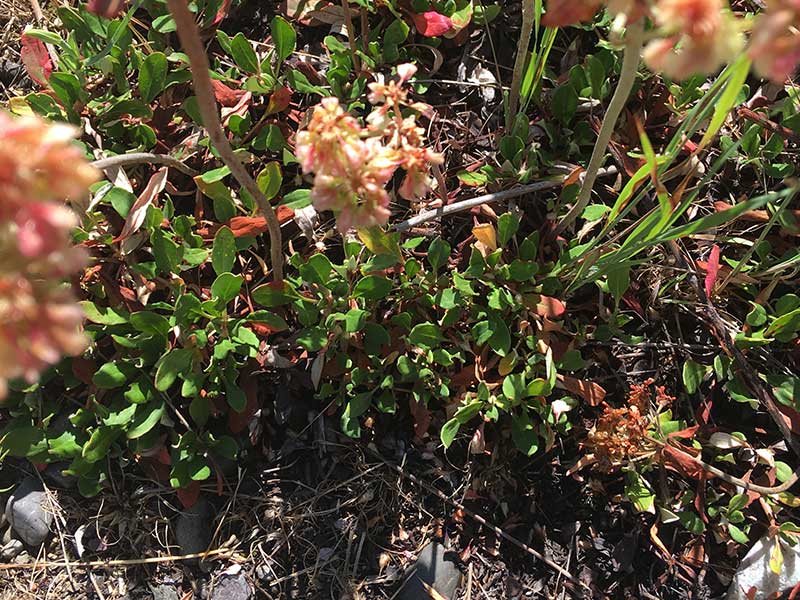Eriogonom spp. / wild buckwheat
- short, with small leaves close to the ground
- leaves persistent in winter, green and red
- blossoms – cute little buttons that look like dried flowers; long-lasting
- inflorescence – umbel or compound umbel
- may be white, cream, yellow, pink, red; changeable with age
It is no particular trick to identify a plant as being a wild buckwheat, even in the winter. Mostly, you’ll see it from above, so looking down, you see cute little buttons that look sort of like dried flowers. The buttons come in clusters of their own. The plants are quite short, and the leaves cushion-y. You find them on dry hillsides or the tops of hills and mountains. The blossoms are long-lasting, so you can even come back tomorrow and see them again.
The individual clusters attached to longer stems (peduncles) are made up of large numbers of teeny, funnel-shaped flowers radiating outward from a central point (see the gallery). Technically, they often have short stems of their own (rays), making these umbels on top of umbels, or compound umbels.
As for color, problematic for many species, for the eriogonums, individual clusters may change colors over their lifetimes, e.g. from white to pink and red as they age. Therefore, looking at a flower cluster doesn’t really tell you what color to match it with.
In the winter, the leaves are strikingly red and green, quite beautiful on an otherwise taupe hillside. Without too much effort, if you lie down on the ground or pick a stem and hold it up, you’ll see that all these clusters are actually at the tops of short pedicels as part of an umbel, and where they all join, there is probably a whorl of green, leaf like bracts.
This is easy and can be done in the allotted minute, and the gallery of photos illustrates it all. I’m sure you get the message. Without a hand lens, a botanical key, and a lot of luck, real identification to species may be impossible. So until you have lots more than a minute, just enjoy them.
At this point, I think the gallery illustrations may some combination of Eriogonum umbellatum (sulphurflower buckwheat) or E. heracleoides (parsnipflower buckwheat). Or just buckwheat.
| Color | |
|---|---|
| Family | |
| Blossom size | |
| Inflorescence size | |
| Inflorescence type | |
| When? | |
| Where? |









